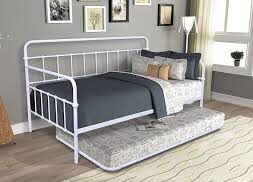With its distinctive Art Deco design and graceful curves, waterfall furniture holds a special place in the history of interior design. Dating waterfall furniture involves understanding its unique characteristics, identifying key design elements, and considering the historical context. In this article, we’ll explore the fascinating world of waterfall furniture, providing insights into its history, tips for identification, and factors that affect its value in today’s market.
Understanding the History of Waterfall Furniture
Waterfall furniture emerged during the Art Deco, which flourished in the 1920s and 1930s. Inspired by geometric shapes, sleek lines, and luxurious materials, Art Deco design embraced modernity and sophistication. Waterfall furniture, characterized by its gently curved edges resembling cascading water, became emblematic of this era.
During the Great Depression, manufacturers sought to streamline production processes and reduce costs. Waterfall furniture, with its simple yet elegant design, offered a solution that appealed to consumers seeking affordable yet stylish furnishings for their homes.
Identifying Waterfall Furniture
Identifying waterfall furniture involves recognizing its distinctive design features and materials. Key characteristics include:
- Curved Edges: Waterfall furniture is defined by its curved edges, which create a flowing, seamless appearance reminiscent of cascading water.
- Veneer Construction: Many pieces of waterfall furniture feature veneer construction, with thin layers of wood applied to a solid wood or plywood core. Popular veneers include walnut, mahogany, and maple.
- Geometric Inlays: Some waterfall furniture pieces incorporate geometric inlays or contrasting wood accents, adding visual interest and depth to the design.
- Streamlined Silhouettes: Waterfall furniture is known for its sleek, streamlined silhouettes, reflecting the influence of Art Deco design principles.
To accurately date waterfall furniture, examine the construction methods, hardware, and manufacturing labels or markings. Pieces produced during the 1920s and 1930s are typically of higher quality and may bear the manufacturer’s stamp or label.
Factors Affecting the Value of Waterfall Furniture
Several factors influence the value of waterfall furniture, including:
- Condition: The condition of the piece significantly impacts its value. Look for signs of wear, damage, or repairs, such as scratches, chips, or missing veneer.
- Rarity: Rare or unusual pieces of waterfall furniture, particularly those featuring intricate inlays or exotic wood veneers, are highly sought after by collectors and may command higher prices.
- Provenance: Waterfall furniture with a documented history or connection to a famous designer or manufacturer may have increased value due to its provenance.
- Market Demand: Market trends and consumer preferences can affect the value of waterfall furniture. Pieces in high demand or scarce supply may fetch higher prices at auctions or antique markets.
Tips for Dating Waterfall Furniture
When dating waterfall furniture, consider the following tips:
- Research: Familiarize yourself with the history of Art Deco design and the characteristics of waterfall furniture. Consult books, online resources, and expert opinions to learn more about specific manufacturers and design trends.
- Examination: Carefully examine the construction, materials, and design elements of the piece to identify clues about its age and authenticity. Look for details such as dovetail joints, hardware style, and construction techniques.
- Comparison: Compare the piece to known examples of waterfall furniture from the same period to assess similarities and differences in design, materials, and craftsmanship.
- Documentation: Keep records of any markings, labels, or provenance associated with the piece, as this information can help establish its authenticity and provenance. Check The Best Bedding Company
Conclusion
Dating waterfall furniture requires a combination of historical knowledge, careful observation, and attention to detail. By understanding the history of Art Deco design, identifying key characteristics of waterfall furniture, and considering factors that affect its value, collectors, and enthusiasts can develop a deeper appreciation for these elegant and timeless pieces. Whether you’re shopping for antique treasures or seeking to identify heirloom furniture passed down through generations, the process of dating waterfall furniture offers a glimpse into the rich legacy of Art Deco design and craftsmanship.

